Email marketing starts with an email list. You need to build an email list to market your products and services to the subscribers.
This missing piece of the puzzle is often ignored by most businesses and marketers.
Email marketing indeed has one of the highest ROIs among digital marketing channels. But you can’t do email marketing if you don’t have a decent email list.
You need subscribers – and lots of them to be successful with email marketing.
Let’s find out how you can build an email list to grow your business.
Benefits of Having an Email List
If your business doesn’t have an email list, you are missing a lot. Here’s a list of the primary benefits of having an email list for your company:
Permission-Based Marketing
The best thing about an email list is that it is consent-based marketing. What this means is that people who opt-in and join your email list give you permission to send them emails.
When you send an email to your list, they are more likely to open and read it. This is because they have given you explicit permission for it.
This is a reason why emails have an open rate of well over 35% and a click rate of 2.62%:

Most of the other forms of marketing aren’t permission-based and this is what makes email marketing and building an email list an ideal deal.
Highly Targeted
When you build an email list, one of the first things you do is segment subscribers. This segmentation significantly improves targeting.
Most email marketing tools and autoresponders have built-in features of subscriber segmentation where they group users based on a wide range of variables such as activity level, engagement, sign-up method, demographics, click and open rate, purchase history, etc.
This helps you send specific emails to your list that resonate with their current status with your business.
You Own It
You own your email list.
This means you can use it in any way you like. You can contact them whenever you want.
When you drive traffic from Google search or run a PPC campaign, you don’t own that traffic. Google owns the search traffic and the ad network owns the paid traffic. You rely on the ‘source’ to get access to that traffic.
Google, for instance, penalizes your site and deindexes it, you’ll lose all organic traffic in no time.
It happens with a lot of businesses on a daily basis.
This doesn’t happen when you have an email list.
Nobody can take it from you. If you have a fairly large email list, you can rent it out (known as email swapping).
Cost-Effective Marketing
Promoting a product to your list is very cost-effective. All you need to do is send an email – that’s it.
You only have to pay a subscription fee for the email marketing tool you are using. This might get expensive if you have a large email list.
It will cost you $26 to $1,000+ per month depending on the platform you are using and the number of contacts you have:

This cost means nothing if you use your list smartly.
Direct Communication
Email list lets you communicate directly with your customers (and subscribers), and vice versa.
This type of direct, personalized communication isn’t available with other platforms. It allows you to get honest feedback, conduct surveys, and connect with subscribers at an individual level.
It boosts engagement, retention, and revenue.
Your list feels connected and subscribers are more likely to move down the funnel if you communicate with them at a personal level.
High ROI
Email marketing has a high ROI – probably one of the highest among all digital marketing channels.
Marketers make $36 for every $1 spent on email marketing which is 4x higher than Google Ads ROI:
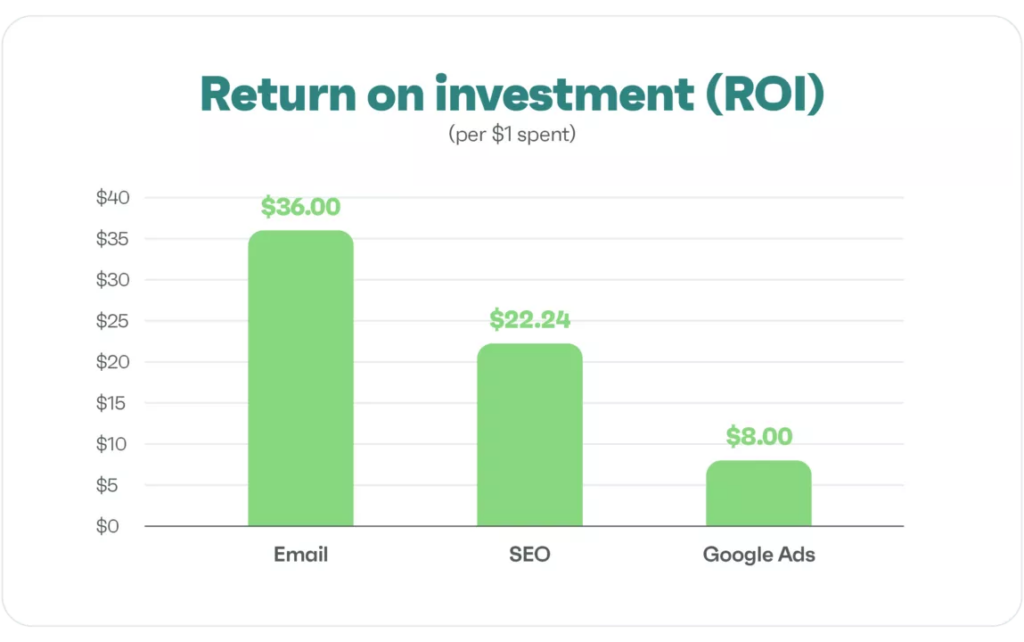
Your list has a higher-than-normal customer lifetime value due to declining CAC. And since your list is more loyal, they have a significantly higher reorder value.
All this adds up to business profitability.
How to Build an Email List
Let’s find out how to build an email list so you can have access to all the lucrative benefits discussed above:
- Choose tech stack
- Create a lead magnet
- Create a squeeze page
- Set up autoresponder
- Promote your lead magnet.
1. Tech Stack
The first step is having the right tools and apps to build an email list.
It’s not something that you can do manually or without the right tools.
You need the following platforms to get started with list building:
- Email marketing tool to create sign-up forms and send automated emails to your lists
- Landing page builder to create marketing pages for list building by offering a lead magnet to your audience.
Email marketing platforms offer landing page features to collect email addresses. For instance, ActiveCampaign offers you a wide range of features that cover email marketing, automation, landing pages, CRM, and more.
But it does not match with a dedicated landing page builder like Unbounce or Leadpages. These landing page builders offer advanced features and the flexibility that you need to create high-converting squeeze pages at scale.
If you are on a budget, choose an email marketing platform and use its built-in feature to create landing pages. Your best choices in this case are:
- MailChimp
- ActiveCampaign
- HubSpot
- MailerLite
- Constant Contact
- Brevo.
If you need more control over squeeze pages and have the budget to afford a landing page builder, go with one of the following:
- Leadpages
- Instapage
- Unbounce.
You’ll need to integrate your landing page builder with the email marketing tool so that leads from the landing page are sent to your email marketing tool which will trigger your autoresponder.
It’s pretty easy to do as long as both tools have integration options available.
At the base level, you need a solid email marketing tool to get started.
2. Create a Lead Magnet
A lead magnet is an essential part of list building. It is a highly valuable resource that’s given free of cost to the visitors in exchange for their email addresses.
It’s called a lead magnet because it attracts leads like a magnet.
The idea is to offer something valuable to people so they can willingly share their email addresses and contact information. They would share their personal details only if they get something in return.
A lead magnet could be any of the following:
- Free trial
- eBook
- Discount
- Samples
- Free consultations
- Checklists, templates, or case studies.
Here’s an example of a lead magnet offered via a squeeze page:
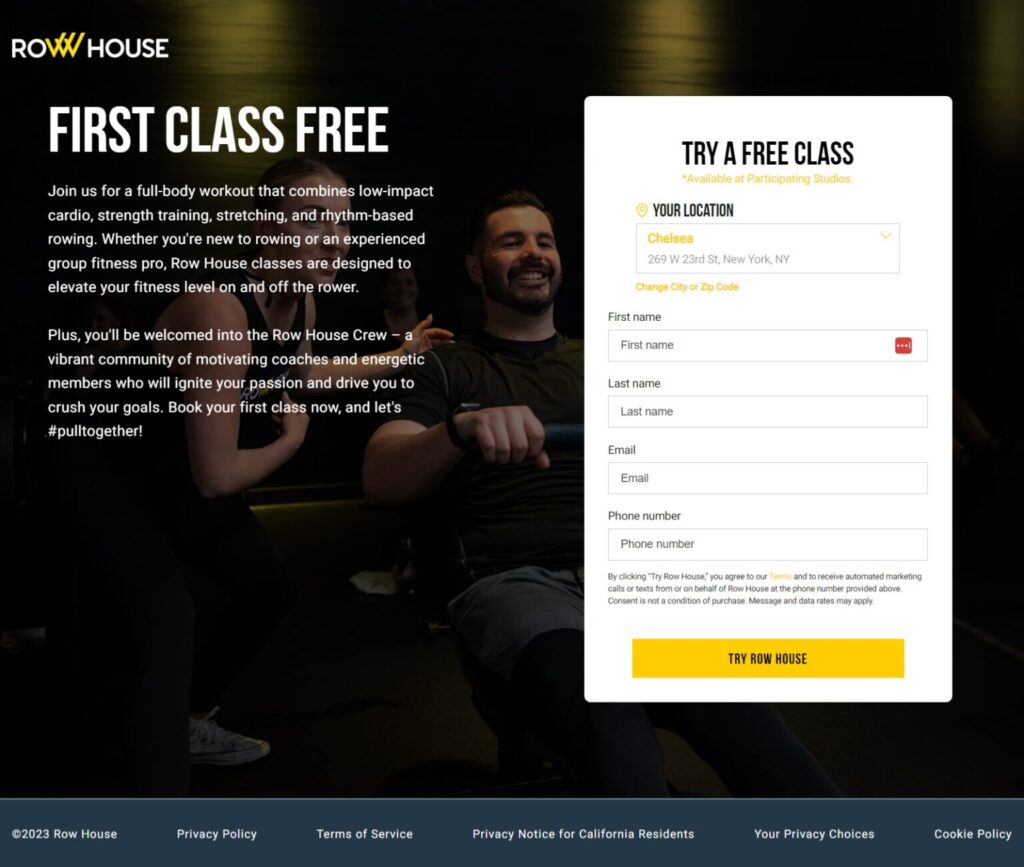
You need to make sure that the lead magnet is perceived as valuable by your target audience. It should be an attractive offer that visitors can’t refuse and end up sharing their email addresses to grab it.
The challenging part is creating the most epic lead magnet for your audience. Here’s how to do it:
- Choose a buyer persona that you want to target
- Figure out what is the biggest challenge that the persona faces
- Create a solution for their challenge in the form of a lead magnet
- Make it exciting and informative
- Deliver it in a format that your persona loves interacting with.
It all comes down to understanding your ideal customers and using data to create the best lead magnet.
You might have to create multiple lead magnets and test them to find the one that works best. So, it’s best to create at least 3 lead magnets.
3. Create a Squeeze Page
A squeeze page is a marketing page that’s specifically used to capture the email addresses of the visitors. It’s only objective is to ‘squeeze’ out the email address by offering a lead magnet to the visitors.
Here’s an example of a squeeze page that’s highly specific with one, clear purpose:
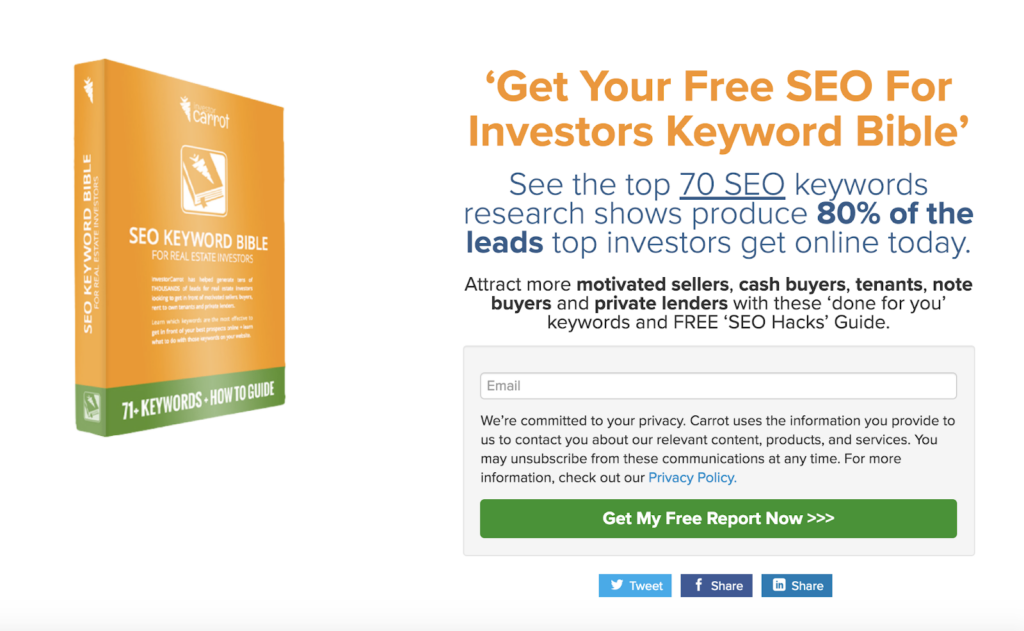
Squeeze page is a shorter version of a lead capture landing page. It has a title, headline, copy, form, CTA, and an image or a video. Everything is presented above the fold.
It acts as the home for your lead magnet. You send traffic to the squeeze page by integrating it with your email marketing tool. Visitors add their email addresses to access the lead magnet. They get email automatically and you get email addresses saved in your contacts.
Here’s a flow that works at the backend:

Squeeze page is one way to build an email list. You can create a signup form and embed it in your website footer and sidebar and add them to blog posts to capture the email addresses of site visitors.
HubSpot does a great job at capturing email addresses by pushing highly relevant lead magnets across its blog. Here’s an example:
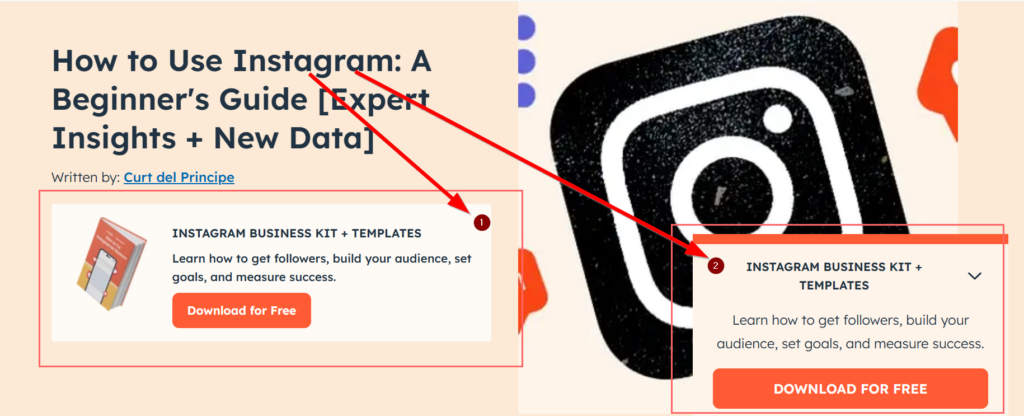
They offer free downloads relevant to the content a reader is reading. This helps them send traffic to a squeeze page where they capture email addresses.
You need to use the same technique (more on this below).
Importantly, you need to create multiple squeeze pages with different layouts. This is a reason why you should use a landing page builder as it gives you more control by offering multiple templates to choose from.
Remember, a single lead magnet and a single squeeze page aren’t enough to build an email list at scale.
4. Set Up Autoresponder Series
This is the part where you set up everything at the backend of your email marketing platform.
You need to set up a series of emails that are sent out to new subscribers automatically. The first few emails should include:
- A welcome email with an email confirmation link for double opt-in
- Email with a link or details of the lead magnet.
These two emails should be sent out almost immediately. If you have enabled double opt-in (which you should do to filter fake email addresses), the lead magnet should be sent out after email confirmation.
Once you have delivered the lead magnet, the next few emails should offer related content (sent once per week):
- Email 1: Guide subscribers on how they can use the lead magnet they received to solve their problems and achieve their goals. For instance, if it’s a free trial or discount code, guide them on how to redeem it with exact steps.
- Email 2: A reminder email to those who haven’t taken the desired action. Tell them what they are missing. Use FOMO and leverage social proof.
- Email 3: Share more relevant content and resources related to the lead magnet to push them down the funnel.
Email Sequence
Use the following sequence to create a series of emails based on subscriber activity and engagement:

Or, consider using a more engagement-focused autoresponder series:

Choose what works best for your subscribers.
Follow these guidelines when setting up email workflow:
- Don’t overpromote. Focus more on sending informative emails with minimal promotional content
- Link your email series with the buyer journey and push subscribers down the sales funnel
- Segment subscribers with age based on their activity and engagement
- A/B test emails and identify the best email copy.
You can easily create an email series workflow in any email marketing tool. It’s pretty easy and most platforms offer drag-and-drop builders. Here’s an example from MailChimp:

You can choose from existing templates if your email tool offers them.
In any case, it’s not really hard to do.
5. Promote Your Lead Magnet
It’s time to market your lead magnet.
If you want to build an email list fast, you need to promote your lead magnets – all of them.
Your website is the best marketing channel.
If you receive decent traffic, it’ll get pretty easy to build an email list.
Here’s how to promote your lead magnets to build an email list:
- Add a sign-up form in relevant blog posts (see HubSpot example above). The lead magnet should be related to the content and must provide additional value to the readers
- Use popups to get visitor attention and persuade them to visit your squeeze page or embed a signup form in the popup
- Promote your lead magnet on social media
- Add links to the most important and high-converting squeeze page on social media bio
- Run social ads to send targeted traffic to squeeze pages
- Promote lead magnet in niche forums
- Use Reddit and Quora to offer valuable content free of cost
- Add links to squeeze pages and the most enticing lead magnets in the email signature.
You can use a wide range of other free and paid marketing channels to promote lead magnets. Once you start getting a hook for it, the best way is to start publishing content that aligns with lead magnets (instead of doing it otherwise).
For instance, if a lead magnet on “SEO checklist” turns out to have the highest conversion rate. Create SEO-related content for your blog and link to your lead magnet.
This is the best way to build an email list at scale – that is – when you integrate lead magnets into your content marketing strategy.
Remember, promoting your lead magnets is essential. You can’t build an email list without marketing lead magnets.
Best Practices to Build an Email List
There’s a lot you have to do to build an email list besides following the 5-steps discussed above. Here’s a list of the best practices and proven techniques to build an email list quickly:
1. Run A/B Tests
The best way to improve the conversion rate and CTR of your squeeze pages is by running A/B tests.
Because that’s where conversion takes place.
A/B test lets you tweak different elements on the squeeze page with a focus on improving conversions. A high conversion rate means more sign-ups (aka list building).
Low sign-ups, especially with high visitors, are an indication that something isn’t right on the squeeze page. You need to find and fix it. A/B experiments let you do it – scientifically.
Here’s how an A/B test works:

You need to start by developing a data-driven, scientific hypothesis using the following template:

Then create landing page variations and run the test. This is where a landing page builder tool will come in handy as most of them offer A/B testing features.
You can run A/B tests for squeeze pages effortlessly with leading landing page builders like Unbounce. It’ll be a bit hard to find this feature with email marketing tools to run A/B tests for landing pages.
Running A/B tests from day one is an absolute must. You’ll get to know what elements work on a squeeze page and which ones don’t. This helps you get better at creating landing pages for new lead magnets that convert at a higher rate.
2. Get Rid of Inactive Subscribers
A common misconception among marketers and businesses is that they consider all subscribers equally good.
Not all subscribers are equal and some suck your dollars like zombies.
You need active and engaging subscribers in your list. That’s how you generate sales. Inactive subscribers are a burden who cost you money without taking any action.
Research shows that up to 75% of email subscribers are inactive and they are known as “zombies” because they cost you money (in terms of monthly fees):

Subscribers who don’t like your lead magnet or don’t get the expected value from it are the most high-risk and low-value inactive subscribers:
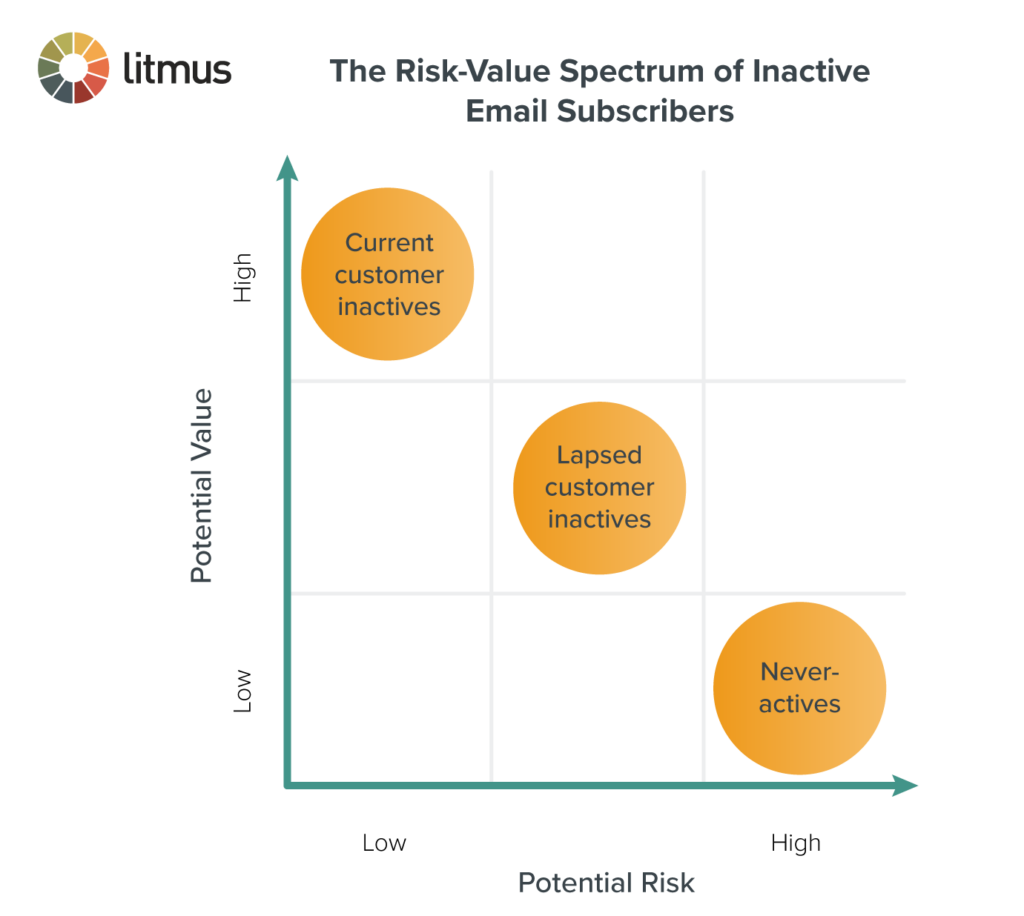
You need to actively engage with inactive subscribers right from day one. If they don’t respond, remove them from your list.
It’s called list cleaning which is an important part of email list building. It reduces email platform costs and improves deliverability and email metrics.
3. Use Double Opt In
One way to maintain list hygiene and reduce email marketing cost is using double opt-in.
You might not be able to build your email list as quickly with double opt-in, but it is worth it for two main reasons:
- It significantly reduces inactive subscribers and improves email deliverability
- It reduces email marketing tool costs where you are charged on the number of subscribers you have.
Here’s how double opt-in works:
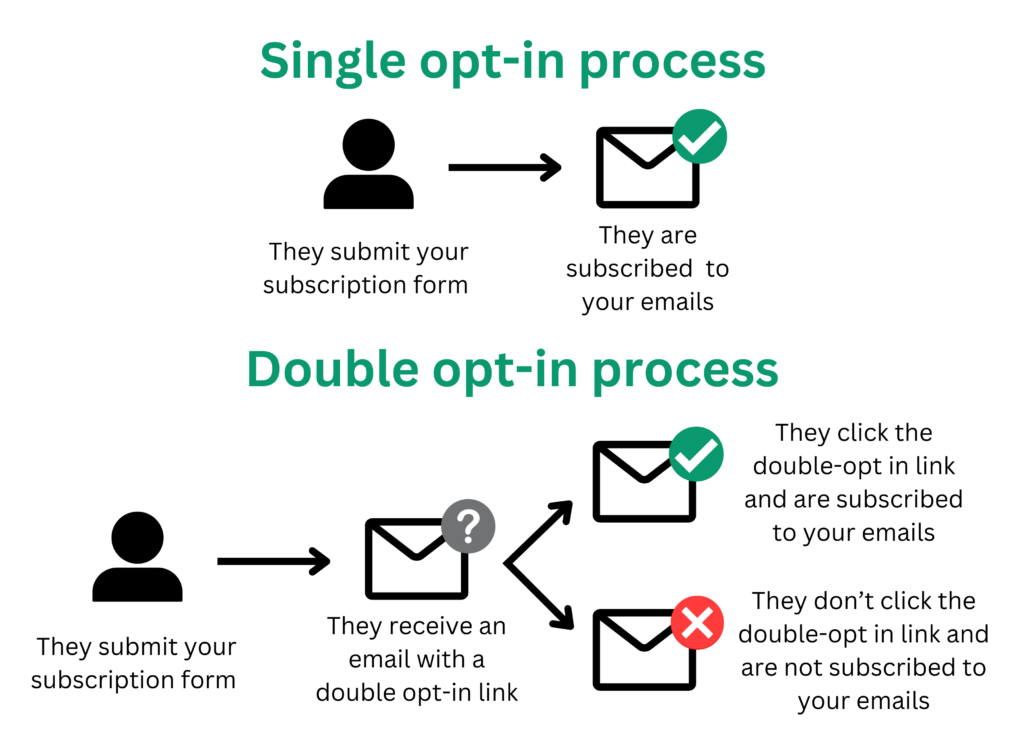
It adds an extra email to verify the email address. This ensures that your list has active, usable email addresses and not fake ones.
You can enable double opt-in with a single click. All the leading email platforms have this option.
Ideally, you can embed a confirmation link and lead magnet link together in a single email.
4. Expand Best Content into Lead Magnets
The quality of the lead magnet determines the engagement of your list.
You’ll end up having a lot of inactive subscribers and a high unsub rate if your lead magnet doesn’t meet expectations.
The life cycle of a lead magnet is pretty short and it ends as soon as you get an email address. But it impacts your list, conversion rate, and email marketing cost.

Your squeeze page sets certain expectations about the lead magnet. If it meets or exceeds those expectations, great. If it falls short, you’ll notice a high number of inactive subscribers.
They won’t convert as often as some of the other subscribers and it all adds to the cost.
Your best bet is to take ideas from existing content. Find top-performing content on your site and convert it into a lead magnet.
You can expand existing content, add more value to it, or add a template or checklist – and offer it as a lead magnet.
Make the most out of the short life cycle of your lead magnet by offering exceptional value.
5. Partner With Influencers
Influencer marketing is an amazing way to promote your lead magnet.
You need to find relevant influencers (specifically nano and micro) in your niche. Collaborate with them. It is the most cost-effective way to build an email list quickly.
Here’s an example:

In this case, a free resource might not be a lucrative offer. Choose other types of lead magnets like free trials, discounts, and exclusive offers.
The followers of the influencer might not share their email address for a free resource but they will use a free product or use a discount code.
Create the right lead magnet and choose the best influencers to promote it.
Final Words
An email list is your business’s best friend. It helps you collect feedback, generate sales, and grow your business. What else do you need?
Build an email list today and you’ll never regret your decision and investment.
It might not be an easy journey because it requires a lot of hard work, experimentation, and patience to build a list of a few thousand active subscribers.
Prepare yourself for the road ahead and take the first step today.
Choose an email marketing tool and follow the steps discussed in this guide.
Featured Image: Pexels



